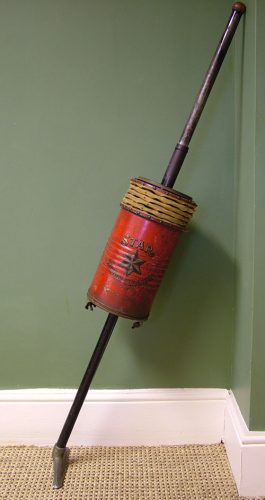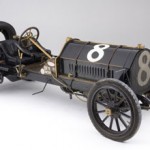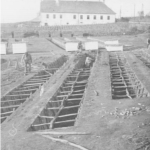 “The easiest way to utilize pump vacuums (picture below, left) was to have two people operate them. One person would pump the vacuum while a second would use the hose and wand or tools to clean. A common sight was a daughter pumping the handle while mom did the cleaning. Most early vacuum cleaners were expensive for the time. The well-to-do often would purchase the cleaning contraptions to ease the workload of their servants or housekeepers.”
“The easiest way to utilize pump vacuums (picture below, left) was to have two people operate them. One person would pump the vacuum while a second would use the hose and wand or tools to clean. A common sight was a daughter pumping the handle while mom did the cleaning. Most early vacuum cleaners were expensive for the time. The well-to-do often would purchase the cleaning contraptions to ease the workload of their servants or housekeepers.”
“Bellows operated vacuums appeared in several styles and shapes. Some early vacuums utilized a single bellows. This made the cleaner less efficient because there was no suction as the bellows closed. Suction was produced only as air rushed into the bellows as it opened. To make the machines more useful, bellows were installed in pairs and offset to allow one to open while the other closed.” Picture right: a bellow-operated Star Vacuum Cleaner.
“In their day, wheel operated vacuums approached the cutting edge of early technology. They exhibited a sophistication that was not present in earlier vacuum designs. This style of machine provided powerful and continuous suction for its user. The increase in vacuum even allowed for larger diameter hoses and bigger cleaning tools. Typically, one person cranked the wheel while another cleaned with a wand or hand tool.”
“Friction vacuum cleaners are based on an ingenious concept conceived by James Kirby. They utilize the driving force of the rear wheels to power the cleaner. This style of vacuum derives its power when the operator pushes it across the floor. The wheels contact the floor and turn the axle. This energy is transferred to the fan via a worm gear during every forward motion of the machine. The front wheels are connected to a brush roller to create a sweeping action. These machines look like an early electric upright vacuum, but do not need electrical current to run. As a result, they have no electric motor, cord, plug, or switch. This makes them lightweight, quiet, and cost free to use. Friction vacuums were popular well into the 1940’s in communities where electricity was not available.”
More: VacHunter galleries. Thank you, Adriana.





